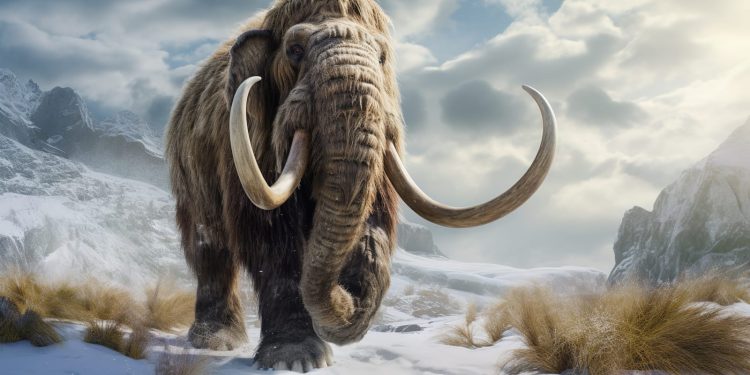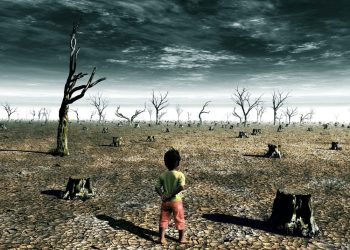The field of de-extinction, which focuses on the revival of extinct species, is making significant strides. Advances in this area suggest that we may soon witness the return of some iconic creatures.
In my personal view, I am not such a big fan of this process right now. The reason is simple, after we clone and bring back to life the Woolly Mammoth, the Dodo, and these other species, will we go on? How long until Jurassic Park?
Here are six species that scientists are actively working to bring back to life.
1. Woolly Mammoth
Woolly mammoths (Mammuthus primigenius) once roamed across vast stretches of Asia, Europe, and North America during the last ice age, about 300,000 to 10,000 years ago. A small population even survived on Wrangel Island until around 4,000 years ago. These massive creatures were driven to extinction due to climate change, human hunting, and reduced genetic diversity. Did you know scientists created… Wolly Mammoth meatballs?
However, the Arctic permafrost has preserved mammoth remains so well that scientists can extract DNA and piece together the animal’s genome. By combining this genetic material with that of modern elephants, researchers hope to create a living mammoth. Colossal Biosciences, a U.S.-based de-extinction company, aims to produce the first mammoth calves by 2028.
2. Dodo
The dodo (Raphus cucullatus), a large flightless bird, was native to Mauritius, an island near Madagascar. The species went extinct in the 17th century, primarily due to human activity following European colonization. The introduction of non-native animals, deforestation, and hunting rapidly decimated the dodo population, with the last known bird dying in 1681.
Today, preserved dodo DNA offers hope for its resurrection. In 2022, scientists successfully sequenced the dodo genome using a well-preserved specimen. Despite challenges, such as the need to engineer genetic diversity, experts believe that reviving the dodo might be easier than other species like the woolly mammoth.
3. Thylacine (Tasmanian Tiger)
The thylacine (Thylacinus cynocephalus), often called the Tasmanian tiger, was a carnivorous marsupial resembling a wolf with distinctive stripes on its back. Although it once thrived throughout Australia, the species disappeared from the mainland around 2,000 to 3,000 years ago. A small population survived in Tasmania until European settlers hunted them to extinction, with the last known thylacine dying in captivity in 1936.
Thylacines are considered prime candidates for de-extinction due to the availability of well-preserved DNA samples. Researchers at the University of Melbourne, in collaboration with Colossal Biosciences, have already sequenced a complete thylacine genome and are working to overcome the challenges of reviving the species.
4. Passenger Pigeon
The passenger pigeon (Ectopistes migratorius) was once North America’s most numerous bird species, accounting for up to 40% of the continent’s bird population. However, relentless hunting and habitat destruction by European settlers led to its extinction, with the last known individual, named Martha, dying in 1914.
Although the DNA of passenger pigeons is fragmented, scientists are exploring the possibility of using genetic material from modern-day band-tailed pigeons to recreate a bird resembling the extinct species. Revive & Restore, a biotechnology company, aims to hatch the first generation of these new pigeons by 2025 and potentially reintroduce them into the wild.
5. Auroch
Aurochs (Bos primigenius), the wild ancestors of modern cattle, were once widespread across North Africa, Asia, and Europe. These large, horned animals were driven to extinction by overhunting and habitat loss, with the last known auroch dying in Poland in 1627.
Unlike other de-extinction efforts that rely on genetic engineering, scientists are using back-breeding to revive the auroch. This method involves selectively breeding cattle with traits similar to their wild ancestors. Researchers in the Netherlands have already produced six generations of cattle that closely resemble aurochs, and they are nearing the creation of an authentic-looking auroch.
6. Quagga
The quagga (Equus quagga quagga), an extinct subspecies of the plains zebra, was native to South Africa. The quagga had fewer stripes than other zebras, which made it a target for hunters. By the late 19th century, relentless hunting had driven the species to extinction, with the last known quagga dying in 1883.
In South Africa, The Quagga Project has been selectively breeding plains zebras with the goal of recreating the quagga’s unique striping pattern. While some critics argue that the resulting animal will still be a zebra, others suggest that advances in cloning could eventually allow scientists to bring back the quagga by using DNA from preserved specimens.
Is this a good idea? What will come after?
The prospect of reviving extinct species is no longer a distant fantasy but a rapidly approaching reality. While these efforts present both exciting possibilities and ethical dilemmas, the potential to see species like the woolly mammoth or the dodo return to the Earth could reshape our understanding of conservation and biodiversity. As science advances, the next decade may bring some of these lost species back to life.











